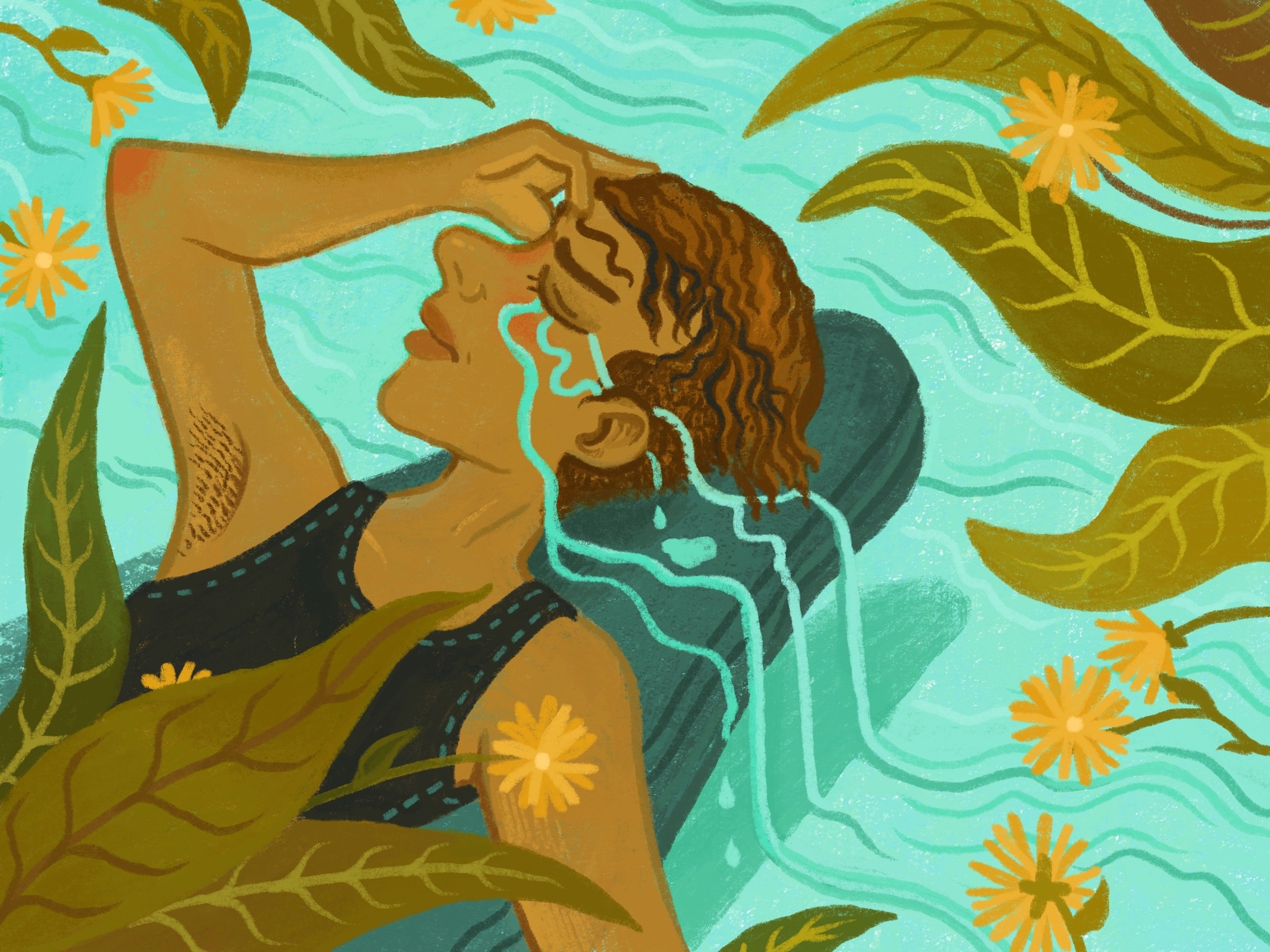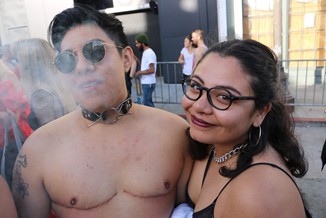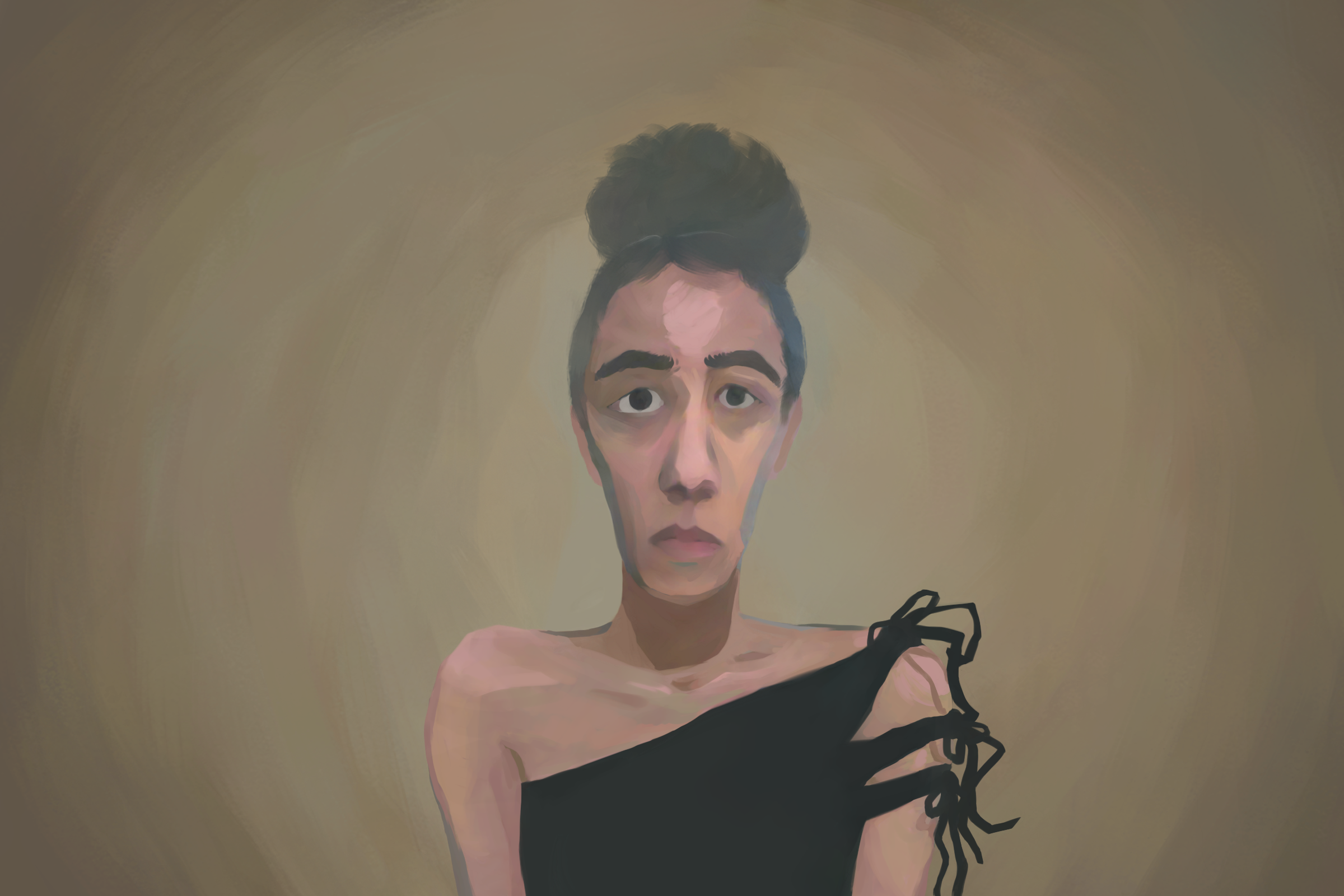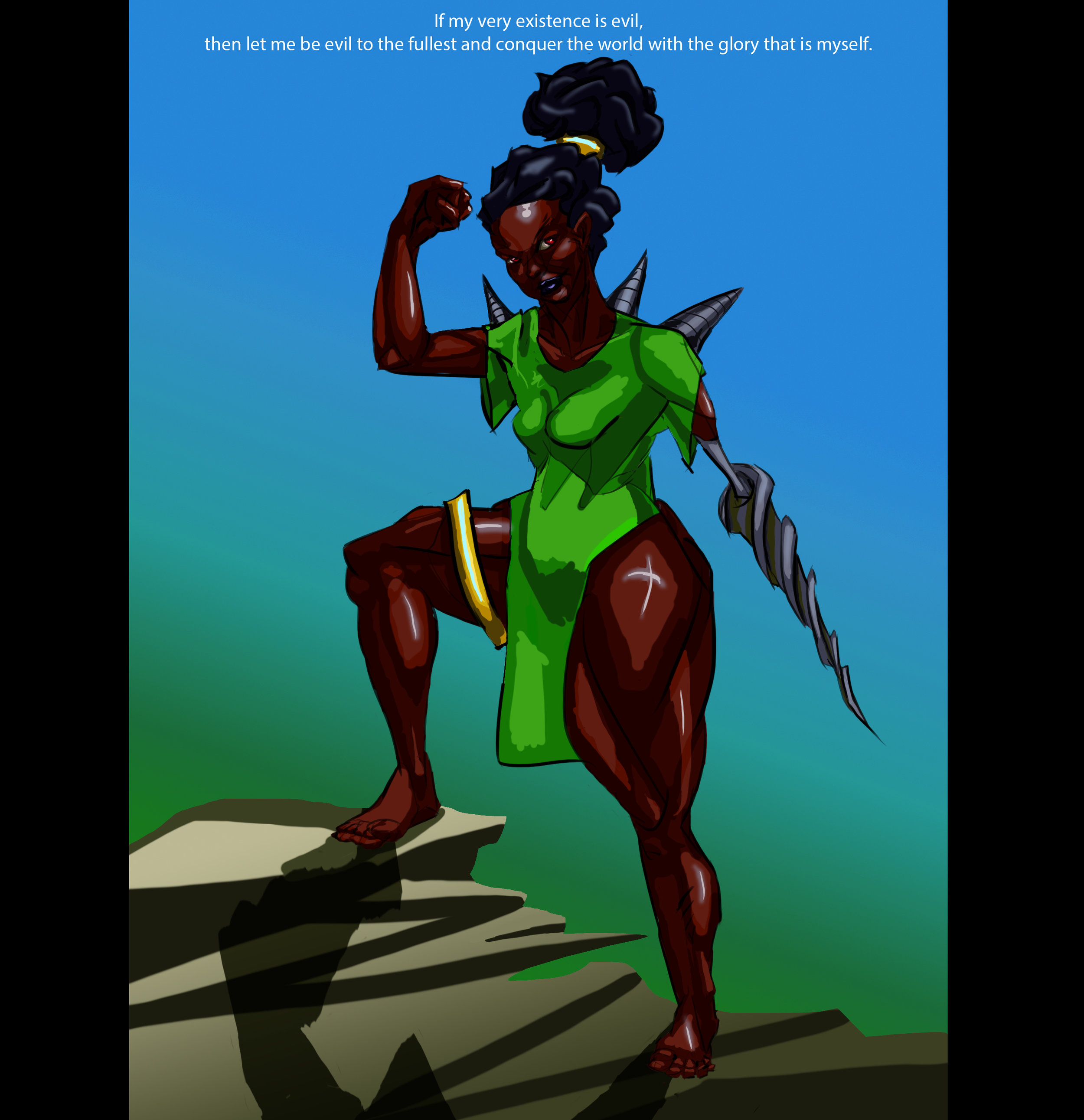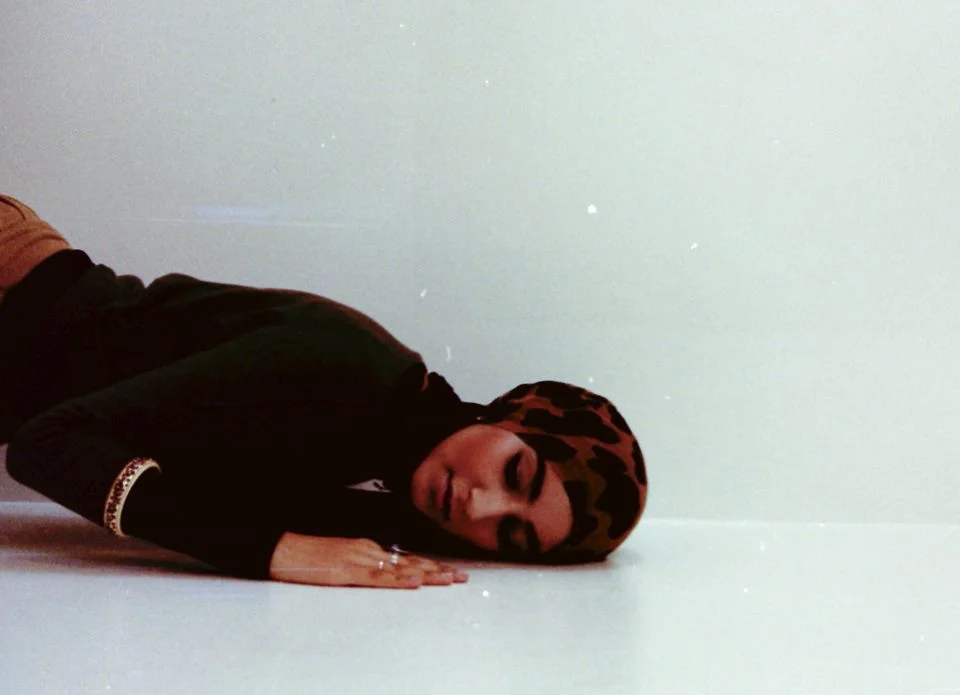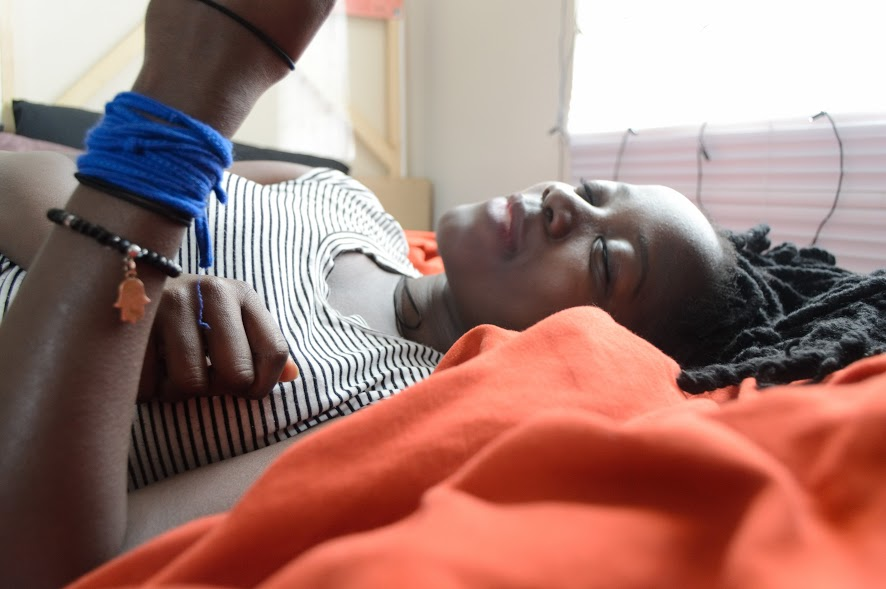Art by Weiwei Xu
“Yeah, but I’ve been down here before, and I know the way out.”
Leo McGarry, The West Wing
There are days I wake up and feel as if I am a fish, flash frozen in a lake, unable to hibernate, and forced to suffer the feeling of isolation and lack of air til the ice thaws.
There are days where the entire world feels so distant that I have to remind myself that my vocal cords work and that I can speak in order to do so.
There are days when I feel as though I lie dormant, underneath the ice, watching everyone go by, unable to cry out even when I want to.
My mind screams “help!” but my voice says nothing. It is as though I am lost in my own body. That my skin and bones have become my prison.
On those days, there are still ways to cope when I’m triggered. But coping always starts with admitting that this day is happening. That might mean calling off work and reminding myself it’s alright not to perform for others, but to care for myself instead.
[CN: self-harm, sexual violence]
Work has been a site of my trauma and retraumatization in the past. I am far too good at going into work and staying below the ice. Puppeting myself through the daily rituals and looking as though everything is fine, while I ponder slicing my own skin in my mind just so I can feel.
I don’t. I don’t cut. But I’ve dreamt about it and fantasized about it since I was 17 years old.
I’ve pinched myself, punched myself, held myself so hard I bruised myself, but never laid a blade to this skin.
But oh, have I thought about it.
If you’re wondering how that makes sense, imagine this.
The only thing that reliably wakes you out of this stupor, breaks through that thick layer of ice and lets you remember you’re alive is the sharp sensation of pain. Pleasure works too, but it’s slower and less reliable. Sometimes, it makes it worse. Pain though? Almost 100% reliable. However, it’s dangerous, especially because the level of pain is regularly increased to get the same result.
I never started cutting because I knew I would have a difficult time stopping.
These days, when I lie under the covers and try to remember that I can breathe, are an endurance battle. My mind is fogged, barely able to process anything. It’s hard enough to remember that this day will pass and end. My desire for food is gone or fleeting, or I can focus only on junk food.
Each simple thing I do must have internal prompting and reminders that it will be ok. Putting on pants, finding a shirt, putting on socks and reminding myself that I have been outside before and do so all the time. Even now, I’ve put on the wrong sweatshirt. I tried to match things, even in the midst of chaos. It gives me a sense of control, but control is what I lose the most in this triggered space.
I wake in the middle of the night, realizing I missed a dose. I never miss my meds because they help so much. Without them, I often wake up at 4 am, with the cortisol spiking in my veins and my muscles so tight I can hear my joints creak. The meds keep my nightmares from feeling utterly real and prevent my day from being ruined by their presence.
I take my pill, hoping it will lead to sleep. Hoping there won’t be nightmares. Hoping for peace.
Do you know what caused this? What sent my world and sanity into a tailspin? What caused me to miss work and be unable to speak and have to remind myself how to care for myself?
A picture. One, single solitary picture. And I was gone.
The people I was with didn’t know the picture was something that would trigger me. I hadn’t told them about my difficulties with this type of material. I was embarrassed by it. But from the moment the image hit the screen, I felt the familiar spin in my head that said this wasn’t going to be an easy moment to cope with.
I’m a trained therapist. I’ve helped hundreds of people deal with their mental lives. I’ve listened to horrifying stories about what people are capable of doing to each other.
I can evaluate someone for suicidality. I can talk to someone about their self-harming habits. I can get someone into an ambulance and hold their hand as we go through the intake process for hospital admittance so they don’t permanently harm themselves.
But I cannot look at that picture or pictures like it. I cannot watch videos of intense violence or pain. I can’t read books centered around violence against women. I cannot hear graphic stories of sexual violence. They make me want to vomit until I can’t stop or cut my wrists to bleed out some of the poison that seeped into my body.
I don’t. Because I know it won’t aid my recovery process, and I know what dangerous consequences that sort of behavior can lead to. I hold onto those thoughts with an iron grip during the worst days because it’s so tempting to fall into this trap.
I distract myself. I call someone and ask them to remind me of what’s good about me. I play video games or read books that have nothing to do with triggering topics. I take a nap. I drink hot tea.
I also acknowledge to myself that this may not be enough today. That for me and others who struggle with self harm, all the best tools may not work completely. On those days, I practice harm reduction. I find a safe way to cause a little pain and do that in bursts til the urge subsides a bit.
I make myself eat. I drink water. I take baths because they help heat my feet and bring circulation back to my feet after my trigger. I care for myself even when my impulse is to do everything but.
Recovering from trauma is a marathon, not a sprint. I try to remember that I’m already somewhere on the path, not back at the beginning, and that I have those I care for around me to help. But I thought I would tell you how hard it is for me to see a picture. Just in case you thought someone was weak for not being able to look at something. Or ever thought trigger warnings are silly and serve no purpose.
Trigger warnings are vitally necessary. They help me. They take care for me. They make sure I can be present and here with all of you. They keep me skating on the surface of the ice and not banging underneath.
Community support helps us continue publishing!
Articles and artwork like these are only possible through your contributions. Please donate today to sustain the wellbeing of artists, writers, healers, and LGBTQ2IA+ people of color.
You can also support our team by picking up
a Rest for Resistance print zine.
Image description:
Three people appear on the edge of a body of water, ripples in the surface as a phone or tablet sinks underwater. The person in the middle has their legs in the water and is watching their device sink. The other two people are on either side, wrapping a blanket around them.
About Shivani Seth:
Shivani is a queer 2nd generation Punjabi American living in the Midwest. Her work includes queer and diverse fiction, teaching allyship, combating mental health stigma in POC spaces and living in recovery. Her writing, updates and other ramblings can be seen on Twitter, Facebook and Medium.


